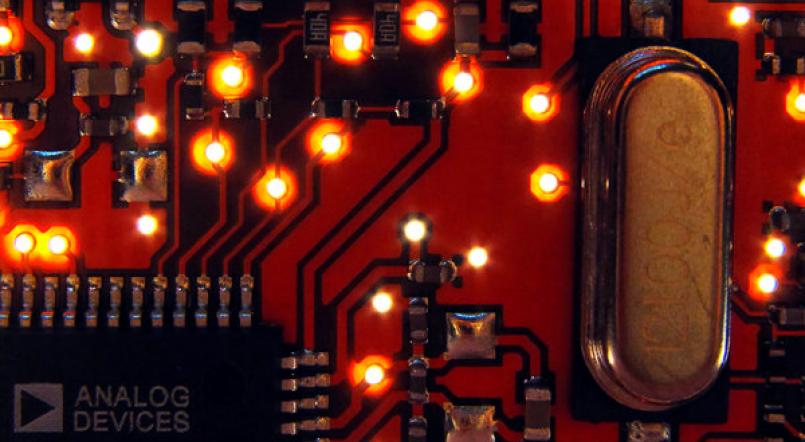With their long-term business philosophy and prudent financing, Mittelstand companies have demonstrated resilience through the financial crisis[1] and are credited with the success of Germany’s economic growth since the end of World War II. Today, many countries are taking note of the Mittelstand companies to understand what secrets lie behind their continued success. Companies such as Tomic TEC, Zwick Roell, KSB and Lunor use quality, innovation and technical expertise to punch above their weight in their respective fields.
As part of their export drive, a large number of fully-owned subsidiaries of Mittelstand enterprises have successfully spread across the globe. One such company is Rohde & Schwarz, a family business since 1933, which has been designing and manufacturing electronic products in areas such as wireless communications and defense for over 80 years[2].
Rohde & Schwarz follows the typical Mittelstand model, keeping production close to research and development. Most of Rohde & Schwarz’s manufacturing facilities are located within a few hours drive of Munich, where their primary R&D center is based. With nearly 10,000 employees, Rohde & Schwarz has grown beyond the definition of a “Small and Medium Enterprise,” but the distinctive traits of the Mittelstand firms remain very much part of Rohde & Schwarz’s strategy: specialization in a high-value niche market, emphasis on innovation, long-term strategic vision, and placing a priority on nurturing a highly-skilled workforce.
“Globalization is a challenge for Mittelstand companies,” commented Dr. Loebermann, EVP of Corporate Operations. For example, financing a global organization, establishing networks and recruiting regional talent present bigger challenges for smaller companies. But Rohde & Schwarz's recent 2011 investment in R&D and production in Singapore shows no indication of any difficulties, employee turnover is half of the industry average. Today, Rohde & Schwarz in Singapore employs over 350 staff from different cultures and nationalities, and the company has plans to expand further in the country. How has a Mittelstand company executed such a smooth expansion to Asia? What can Asian companies learn from them?
Success factors
Mr. Riedel, EVP and Chairman for Rohde & Schwarz Singapore, explained their philosophy: the Singapore office is an extension of the company, not simply a means to offshore production to save costs. Their goals here are to develop R&D expertise and keep it closely linked to the production process. They aim to create a tightly bonded organization with a long-term view and commitment to its employees.
Closely linked R&D and Production
Rohde & Schwarz Singapore develops product lines that are shipped globally, rather than producing products just for the region. The Singapore team has full product ownership, from conceptualisation, to R&D, and production. This strategy results in a high level of empowerment and ownership in Singapore and interesting engineering jobs.
The organizational structures are kept very flat, creating direct communication and information flow. “Our model is sustainable,” comments Dr. Loebermann, “Singapore is not just an extended ‘work-bench.’ We set objectives that are achieved through motivation and empowerment.”
Organisational Bonding
At Rohde & Schwarz, there is high priority placed on creating a strong organisational bond and ensuring the transfer of the corporate culture. The company recognizes the critical role that local leaders play and thus has developed a leadership program for both German and local Asian leaders.
The two-year programme allows these leaders to build up networks within the company and understand both cultures. This point is emphasized by Dr. Loebermann: Leaders at Rohde & Schwarz must have a global mindset and must understand both cultures in order to a support a strongly bonded organization.
high levels of ownership are given to the offices outside of Germany, allowing engineers and managers in locations like Singapore autonomy and ownership.
Long Term Commitment
Following the Mittelstand model, Rohde & Schwarz makes long-term plans and places a high value on retaining their workforce: the decision to expand in Singapore was taken in 2008, and committed to despite the global downturn that followed. Additionally, the company considers concepts such as work-life balance for motivating and retaining employees. Their recent company-wide survey showed that Rohde & Schwarz Asia employees ranked work-life balance as a very important factor, and 83% of the employees in Singapores felt that they were able to maintain a healthy balance between work responsibility and home life.
Maintaining the Lead in Asia
What can Asian companies learn from Rohde & Schwarz and other Mittlestand companies? The key to Rohde & Schwarz’ success in Asia may lie in its concept of a single, global company. The Singapore office is seen as an integrated part of Rohde & Schwartz, rather than as an off-shore production site or regional hub. To achieve this, first, in a high-tech industry, employee retention is paramount. Experienced and talented employees are difficult and costly to replace, and companies should not hesitate to sacrifice the bottom line in the short term to keep their workforce employed and stable. Second, the organization should be as flat as possible and the communication channels between employees and management remain open and direct. Lastly, globalization should be seen as a way of extending the company, rather than simply saving costs. To ensure the company remains integrated, it is critical to develop leaders with global mindset, who can understand the cultures of both the headquarters as well as the host countries.


